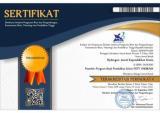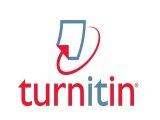Pengembangan Modul Ikatan Kimia dan Bentuk Molekul Berorientasi Nature of Science Untuk Menumbuhkan Literasi Sains Siswa
Abstract
Nature of Science (NOS) oriented module On the Chemical Bonds and
Molecular Forms subject material through the 4D stage (Define, design,
develop and disseminate). This research and development is carried out up to
the stage of development (development) with adjustments based on
development needs. The module prototype was validated by 2 expert
validator, 1 practitioner validator and 10 students as limited test respondents.
Quantitative data were analyzed by percentage formulas and category.
Qualitative data in the form of responses and suggestions are used as
considerations for revisions. The results of expert validation showed an
average percentage of 92.67% with very good categories of material experts,
83.34% with very good categories from product design experts and 76% with
good categories from teacher practitioners. The average response of students
to the modul prototype is 85.1% with a very good category. This shows that
the module that developed is feasible to proceed to a large-scale trial phase.
Keywords
Full Text:
PDFReferences
Arikunto, S. 2012. Dasar-Dasar Evaluasi Pendidikan (Edisi 2). Jakarta: PT. Bumi Aksara.
BNSP Depdiknas. 2007. Panduan Penilaian Kelompok Mata Pelajaran Ilmu Pengetahuan
dan Teknologi. Jakarta: Depdiknas.
Fives, H., Huebner, W., Birnbaum, A.S., Nicoloch, M. (2014). Developing a measure of
scientific literacy for middle school students. Science Education. 98: 549-580.
Friedman, T. 2007. The world is flat: A brief history of the twenty-first century. New York:
Farrar, Straus and Giroux.
Ibnu, S. 2009. Kaidah Dasar Pembelajaran Sains. Makalah disajikan dalam kuliah Landasan
Pendidikan dan Pembelajaran IPA, PPS Universitas Negeri Malang, PSSJ Pendidikan
IPA (RSBI), Malang, 18 Mei.
Irez, Serhat et al. 2011. Exploring Nature of Science Understandings of Turkish Pre-service
Science Teachers. Necatibey Faculty of Education ElectronicJournal of Science and
Mathematics Education Vol. 5, Issue 2, December2011, pp. 6-17.
Khery, Y., Pahriah. (2016). Pemahaman Konsep dan Hasil Belajar Mahasiswa Kimia Umum
dalam Penerapan Model Pembelajaran Concept Attainment. JUPE, Volume 1, ISSN
-5555.
New Zealand Curriculum Guides. (2013). Senior Secondary Science. Wellington: Ministry of
Education.
OECD.2013. Education at a Glance 2013 : OECD Indicators, OECD
Publishing.http://dx.doi.org/10.1787/eag-2013-en(diakses 29 November 2015)
Rahayu, S. (2016). Mengembangkan Literasi Sains Anak Indonesia melalui Pembelajaran
Berorientasi NatureofScience. Makalah disampaikan pada Sidang Terbuka Senat
universitas Negeri Malang, 17 Maret 2016.
Raharjo, M. W. C., Suryati, S., &Khery, Y. (2017). Pengembangan EModulInteraktifMenggunakan
Adobe Flash PadaMateriIkatan Kimia
UntukMendorongLiterasiSainsSiswa. Hydrogen: JurnalKependidikan Kimia, 5(1), 8-13.
Sugiyono, 2015. Metode Penelitian Kuantitatif, Kualitatif, dan R&D. Bandung: Alfabeta.
Suryati, S., Khery, Y., &Dewi, C. A. (2017). Development Strategy of Inquiry Based Mobile
Learning on General Chemistry Classroom.Disajikandalam 2nd Asian Education
Symposium, 2017.
Trianto. 2012. Model Pembelajaran Terpadu. Jakarta: PT Bumi Aksara.
Wenning, Carl. 2006. A Framework for Teaching The Nature Of Science. J. Phys. Tchr.
Educ. Online, 3(3), March 2006. Illinois State University Physics Dept.
Wisudawati, Asih Widi dan Eka Sulistyowati. 2014. Metodologi Pembelajaran IPA.
Yogyakarta: Bumi Aksara.
DOI: https://doi.org/10.33394/hjkk.v6i2.1603
Refbacks
- There are currently no refbacks.

This work is licensed under a Creative Commons Attribution-ShareAlike 4.0 International License.





